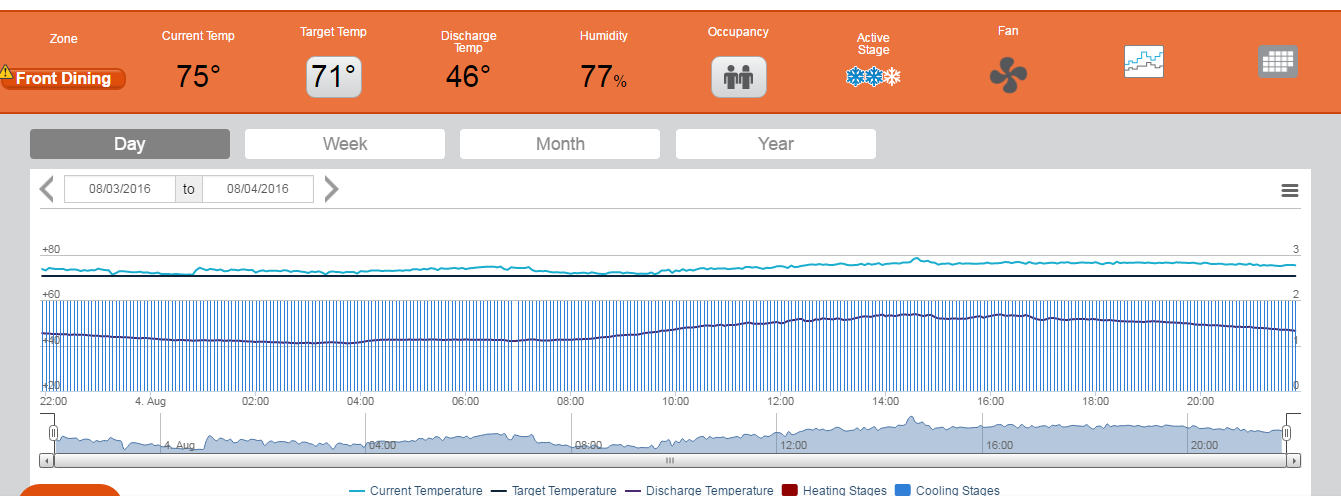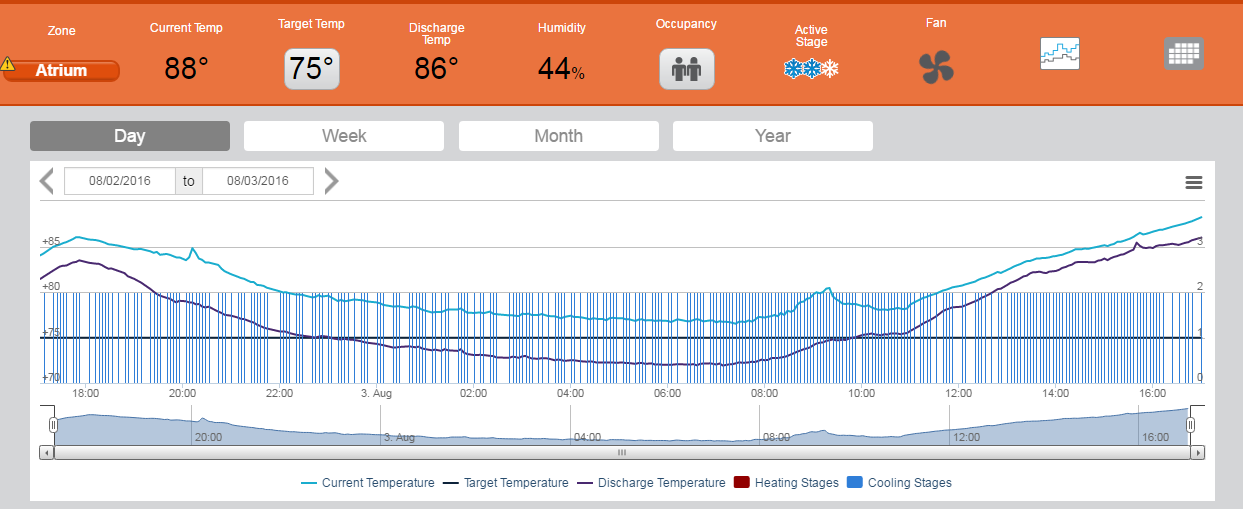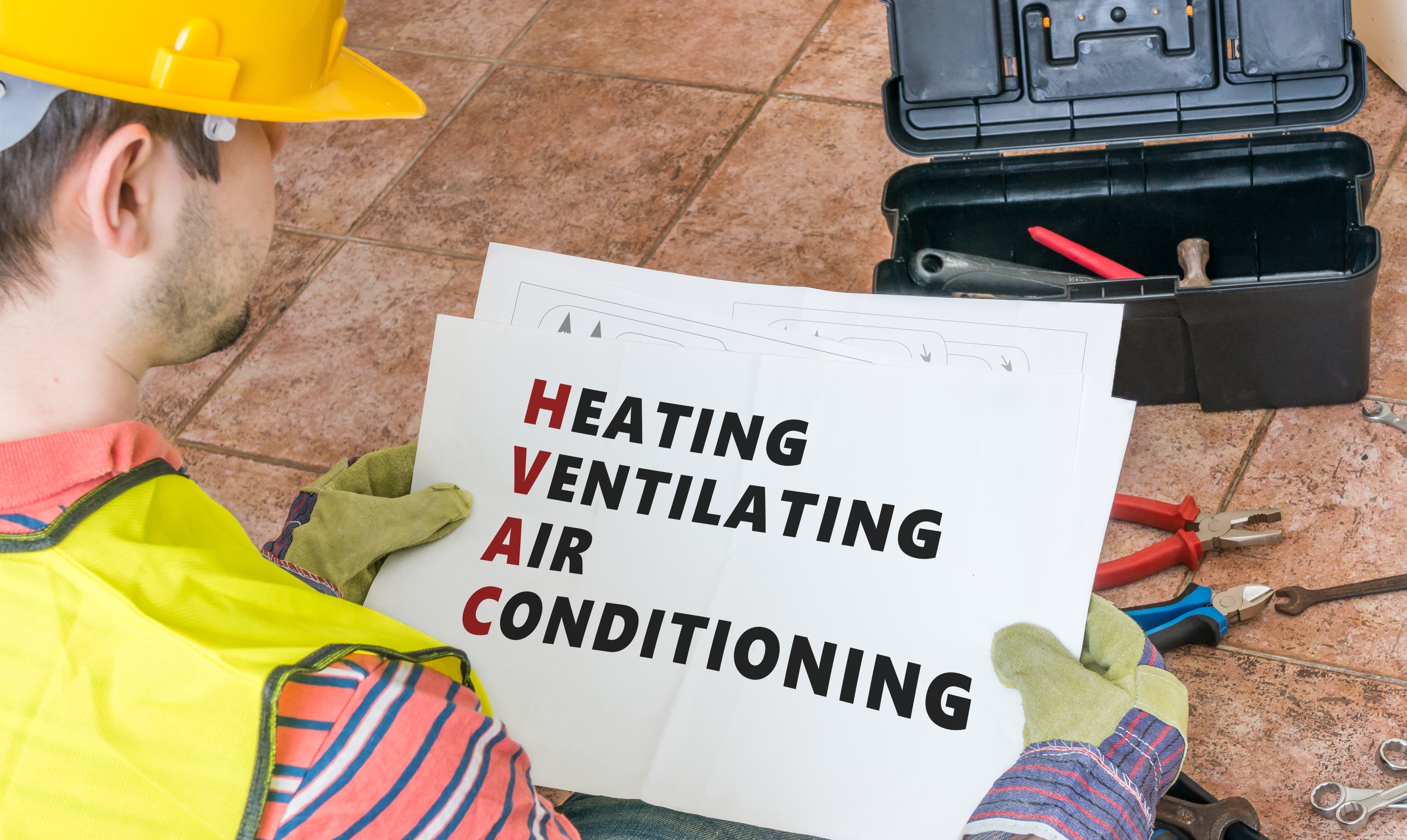As we spring into a new season we see numerous issues regarding HVAC units in particular. Most of the common problems we see in locations are related to the lack of preventative maintenance resulting in long-term wear and tear on units and not to mention the energy that these units are consuming because of that. Our client success managers took their expertise and decided to show their process and how they diagnose problems with HVAC units remotely using the chameleon™ platform and application. Here are 3 ways our client success team here at Small Box Energy diagnose and help remedy problems with HVAC units.
General HVAC Tips
- Set kitchen target temperature in the mid-70s. Most units will not achieve lower temperatures during heavy volume periods and running at temperatures lower than 72 cause unnecessary strain on units while utilizing more energy than is truly required.
- When modifying target temperatures, instead of changing by 5+ degrees in one move, update by 1-2 degrees each week to minimize staff recognition. Making smaller adjustments on a regular basis allows them to adapt vs. noticing an immediate change which will cause them to bypass the system back to original temperatures that were not optimal.
- Clear drain lines from HVAC units can help performance by allowing airflow through the coils to cool more efficiently and causing less strain on the other components of the unit.
- Proper functioning drain pans help the HVAC system performance as allowing the condensation to flow through the drain and not build up causing other issues.
- Conduct preventative maintenance on a consistent basis with all of your HVAC units.
Example 1 – Unit running all the time but running well

Observations
- Two stages running at all times
- No unoccupied time/temperature set (if not 24-hour location make sure schedules are set properly)
- Temperature not hitting target temperature
- Strong splits between discharge and actual temperature being achieved – System running well
Considerations:
- Two-stage cooling means the air conditioner has a compressor with two levels of operation: high for hot summer days and low for milder days. A two-stage unit runs for longer periods and produces more even temperatures.
- As system is running at full strength at all times, unit should not be expected to last as long as if it were running fewer stages and energy usage will be high
- Unit may be undersized for the space and should be discussed further
- Raise the target temperature to one allowing the temperature to be achieved, thus reducing strain on the unit.
- Consider “unoccupied” temperatures during low volume periods if 24-hour operation
- Confirm that both stages are configured correctly at the unit itself, as well as in the thermostat corresponding to the unit
Example 2 – Unit running all the time and not functioning properly

Observations
- Two stages running at all times
- No unoccupied time/temperature set (if not 24-hour location make sure schedules are set properly)
- Temperature not hitting target temperature
- Discharge temperature tracks the outside temperature and raises as the day heats up
- Discharge temperature is above the set point
Considerations:
- Two-stage cooling means the air conditioner has a compressor with two levels of operation: high for hot summer days and low for milder days. A two-stage unit runs for longer periods and produces more even temperatures.
- With discharge temperature not in the 50 to low 60 – degree range during 2 stages of cooling this unit needs to be serviced by an HVAC professional.
- As system is running at full strength at all times, unit should not be expected to last as long as if it were running fewer stages and energy usage will be high
- Confirm that both stages are configured correctly at the unit itself, as well as in the thermostat corresponding to the unit
Example 3 – Unit Running Well

Observations
- 1 and 2 stages running throughout the day as needed
- No unoccupied time/temperature set (if not 24-hour location make sure schedules are set properly)
- Temperature is achieving the target temperature consistently throughout the day
- Strong splits between discharge and actual temperature being achieved – System running well
Considerations:
- As this system is running well, if other units in the same location are not, this system could be helping compensate the entire space for other units.
- Consider “unoccupied” temperatures during low volume periods if 24-hour operation
These tips can help prevent long-term wear and tear on your equipment. Preventative maintenance is essential to energy savings and elongating the life of your equipment. This is true not only for HVAC units but for refrigeration equipment as well and every piece of equipment in your restaurant, c-store and even your home. Take a look at our platform page to see more screenshots of the chameleon app in action!
